Start Your Free Trial!
Sign up to our newsletter, stay updated on news and exclusive offers from EaseUS. Don't worry, if you change your mind, you can unsubscribe at any time, free of charge. We value your privacy (Privacy Policy).
Featured Articles
Personal buyers and computer manufacturers are likely to set SSD as the system disk or boot drive as it's thinner, lighter, and faster compared to HDD in recent years. However, it's a challenge for normal users to transfer operating systems from HDD to SSD.
Here, as a sophisticated software manufacturer, EaseUS will provide you with a quick guide for you to learn how to transfer your Windows 7,8,10,11 to an SSD instead of taking time to reinstall or fresh install OS:
Most people are interested in finding OS migration software to directly move OS from HDD to SSD or vice versa. EaseUS Partition Master is a reliable and convenient choice for transferring OS from HDD/SSD to SSD without reinstalling Windows. It takes only a few steps but saves a great amount of time.
Stay calm if you are sticking with a similar issue as the case listed from Microsoft here:
Best way to transfer OS to new SSD? I am running out of hard drive space due to installing too many games from various giveaways over the last two years. I went to install a second hard drive, only to find that there is no bay for a second conventional hard drive and no place to put/mount the second drive even though there are two free SATA ports and an extra SATA power port...The operating system is on the OEM 1.5 TB drive, but the SSD is much faster. What's the best way to transfer my copy of Windows 10 Pro to the new hard drive? From Microsoft Community
Follow the listed procedures with detailed guidelines to learn how to successfully migrate your operating system to a new SSD disk like an expert.
To ensure a secure and smooth OS transfer procedure, please make sure that you follow our tips here to get everything ready. Before we start officially, let's check some preparatory works.
If you're using a desktop, you have many ways to connect a second solid-state drive to your computer.

Normally, laptop users prefer to use the two latter ways.
SSD is generally smaller than HDD, so it's a great idea to release some disk space by clearing up some system junk files before migrating the operating system to a new SSD. Ensure the SSD storage capacity is equal to or larger than the system C drive data usage on the source hard drive.
EaseUS Partition Master, with its CleanGenius tool, is easy and light for Windows beginners to clean computer junk files & large files with the following tutorial guide.

Guide: Locate, Remove and Delete Large Files in Windows.
It's wise to back up C drive data before OS migration. We can't expect everything to go safe and sound all the time, but we can arm ourselves with a complete backup.
A simple Ctrl C + V or Windows backup software can both work for C drive data backup.
This is the key step. Simply click the download button here, and it only takes a few seconds to download the OS migration tool - EaseUS Partition Master. Its Migrate OS to SSD feature enables all levels of Windows owners to effortlessly switch their operating systems to a new disk without OS reinstallation.
This software also allows you to initialize SSD to the same system disk type as the OS drive to ensure a smooth operating system transfer procedure. You may also read: How to Initialize SSD in Windows 10/8/7.
After getting ready with all the mentioned points, begin right away with the procedure and learn how to transfer OS from HDD to SSD immediately.
3 Tips for Transferring OS to SSD with EaseUS Partition Master:
Now, let's have a look at how to migrate your Windows OS from HDD to SSD with all system files:
Note: The operation of migrating OS to SSD or HDD will delete and remove existing partitions and data on your target disk when there is not enough unallocated space on the target disk. If you saved important data there, back up them to an external hard drive in advance.
Step 1. Select "Clone" from the left menu. Select the "Migrate OS" and click "Next" to continue..
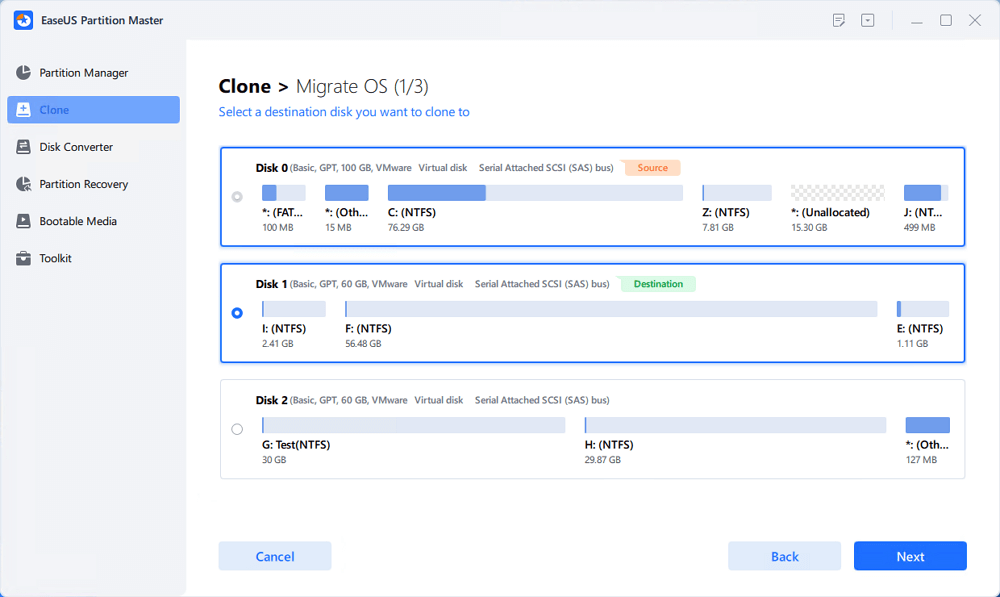
Step 2. Select the target disk you want to clone. Click "Next".
Step 3. Click "Yes" after checking the warning message. The data and partitions on the target disk will be deleted. Make sure that you've backed up important data in advance. If not, do it now.
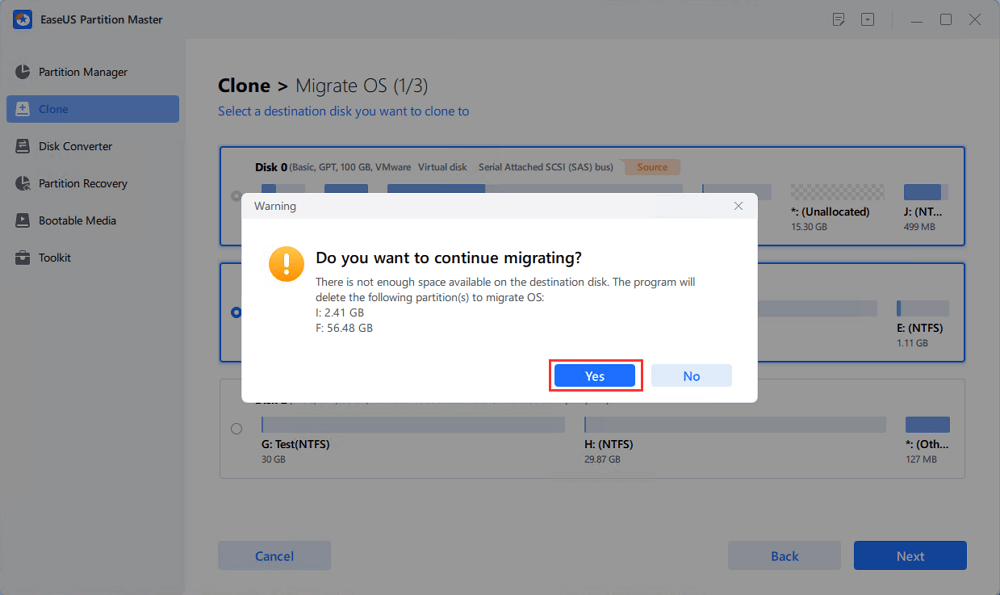
Step 4. Preview the layout of your target disk. You can also click the disk layout options to customize the layout of your target disk as you want. Then click "Start" to start migrating your OS to a new disk
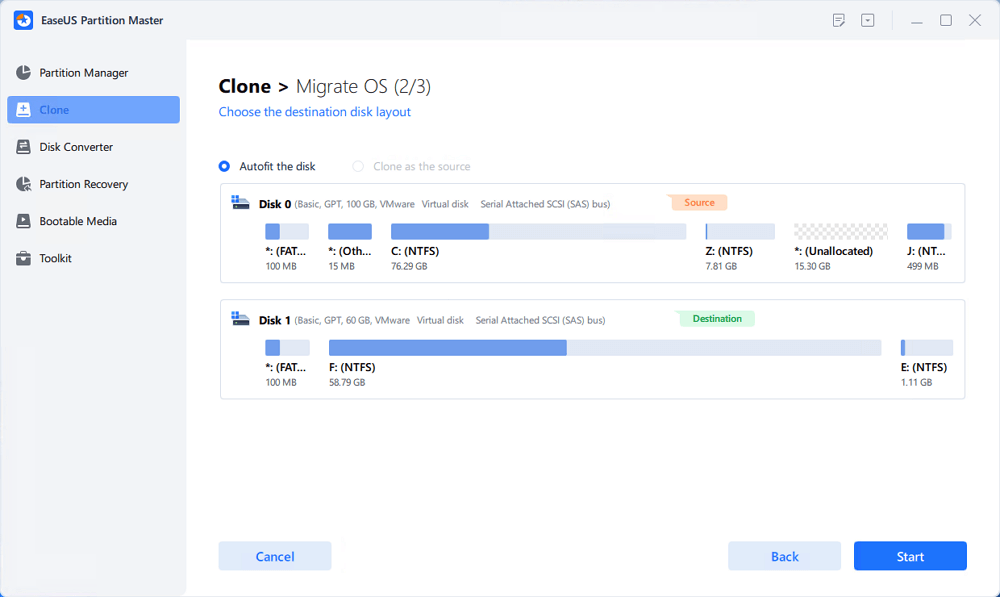
Step 5. When you see a confirming message, asking "If you want to start up computer from the clone target disk", tick "Adjust the order to boot from the clone target disk" and click the respective button through your demands.
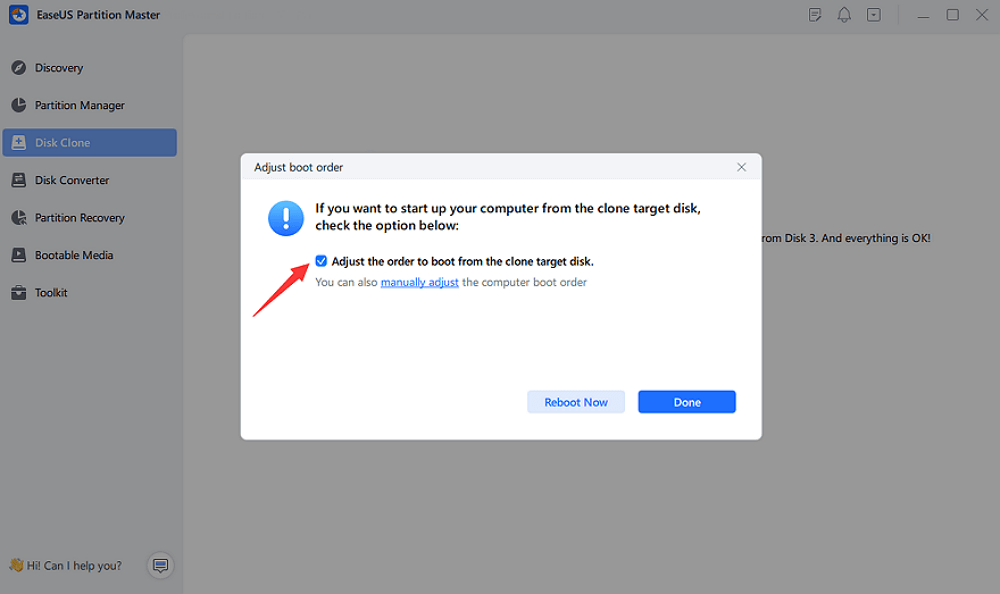
If you like this tool to transfer OS to SSD, you can also click the button below to share it with other people in need.
IMPORTANT: Once you complete the OS migration process, remember to set new SSD as the boot drive. Here are two ways you can follow either to handle PC booting from the SSD after the OS transfer:
This is an easy case. After migrating the OS from the old drive to the new one, you can directly use the SSD as the boot drive by doing so:

Most PCs and laptops all contain two disk slots - one hard drive slot and one SSD slot. Therefore, you can choose to use the SSD as a boot drive on your computer.
Step 1. Restart the PC and press F2/F8 or Del to enter BIOS.
Step 2. Move to the Boot section. At the Boot Priority section, select and set the new SSD as the boot drive.
Step 3. Press F10 to save the changes and restart the PC.
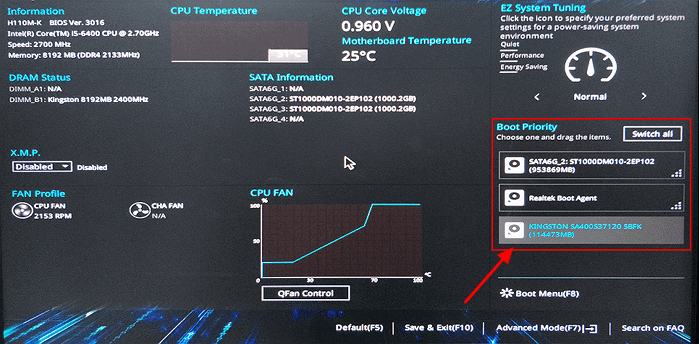
After this, your OS will automatically run from the new SSD, and you'll experience a faster computer with better performance then.
On this page, we covered the whole process of how to migrate or transfer Windows OS from HDD to SSD without reinstalling Windows OS. EaseUS Partition Master, with its Migrate OS to SSD feature, makes OS migration easy.
Don't forget to set the new SSD as the boot drive after moving OS. After transferring OS to SSD, you can also use EaseUS Partition Master to adjust and improve SSD performance with other features, like:
If you need further disk management, turn to EaseUS Partition Master for help. It's also a professional disk cloning software. Don't miss it.
If you have further more questions on how to transfer OS from HDD to SSD, follow and find answers to these listed questions here:
1. Can I transfer Windows from the HDD to new SSD?
To move the OS to another drive, primarily, you can follow three approaches:
If you want to use native Windows options, the safest method is to create a system image of the primary drive. Let's explore how to do it below.
2. How do I move my Windows 10 OS from HDD to SSD?
3. How to transfer OS from HDD to SSD free?
4. What is system image recovery?
System image recovery is restoring your computer from a system image. A system image is a complete copy of your computer, including your operating system, applications, settings, and all other files. You can perform system image recovery to restore your PC.
Was This Page Helpful?
Updated by Tracy King
Tracy became a member of the EaseUS content team in 2013. Being a technical writer for over 10 years, she is enthusiastic about sharing tips to assist readers in resolving complex issues in disk management, file transfer, PC & Mac performance optimization, etc., like an expert.
Brithny is a technology enthusiast, aiming to make readers' tech lives easy and enjoyable. She loves exploring new technologies and writing technical how-to tips. In her spare time, she loves sharing things about her game experience on Facebook or Twitter.
Related Articles
Format EXT4 on Windows 10,8,7 with Best EXT4 Format Freeware
![]() Jean/Mar 28, 2025
Jean/Mar 28, 2025
Mark Partition as Active in 4 Ways [Step-by-Step Guide]🔥
![]() Tracy King/Jan 23, 2025
Tracy King/Jan 23, 2025
How to Add Unallocated Space to C Drive in Windows 10/11
![]() Brithny/Mar 28, 2025
Brithny/Mar 28, 2025
How to Boot from USB on HP Laptop on Windows 11/10 [Step-by-Step]
![]() Cici/Jan 23, 2025
Cici/Jan 23, 2025
CHOOSE YOUR REGION
Start Your Free Trial!
Sign up to our newsletter, stay updated on news and exclusive offers from EaseUS. Don't worry, if you change your mind, you can unsubscribe at any time, free of charge. We value your privacy (Privacy Policy).
Start Your Free Trial!
Sign up to our newsletter, stay updated on news and exclusive offers from EaseUS. Don't worry, if you change your mind, you can unsubscribe at any time, free of charge. We value your privacy (Privacy Policy).